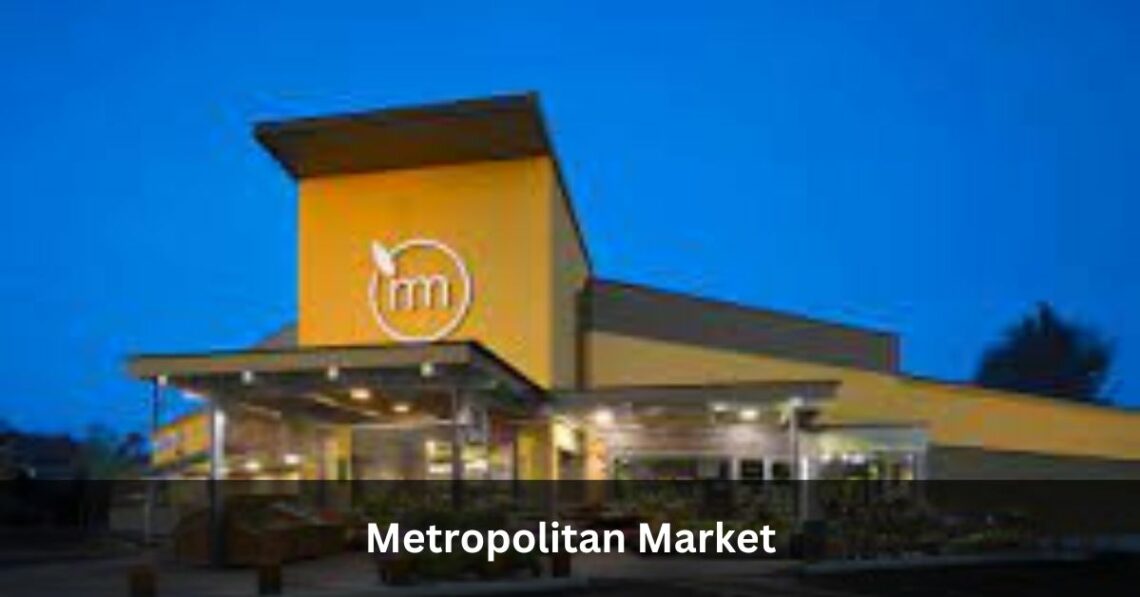
Introduction To Metropolitan Market – Experts Guide
“Explore the dynamic world of metropolitan markets, where urban vibes meet shopping delights. From historic charm to cutting-edge tech, discover the evolution, diversity, and economic impact of these bustling hubs. Join us on a journey through urban commerce, where every corner tells a story and every purchase holds promise.”
Table of Contents
Introduction to Metropolitan Markets:
Metropolitan markets represent the bustling economic centers within urban landscapes, encompassing a diverse array of goods and services to meet the needs of urban dwellers. In understanding the dynamics of urban economies, it is essential to delve into the definition, scope, and significance of metropolitan markets.
Definition and Scope of Metropolitan Markets:
Metropolitan markets refer to the commercial hubs within metropolitan areas, where goods and services are exchanged through various channels such as retail stores, online platforms, and wholesale distribution centers. These markets serve as crucial nodes in the urban economic ecosystem, facilitating trade, employment, and consumer interactions.

Importance of Metropolitan Markets in Urban Economies:
The significance of metropolitan markets in urban economies cannot be overstated. These markets contribute significantly to the economic vitality of cities by providing employment opportunities, generating revenue streams, and fostering innovation and entrepreneurship. Moreover, they play a pivotal role in shaping the social and cultural fabric of urban communities.
Evolution of Metropolitan Markets:
The evolution of metropolitan markets is a testament to the ever-changing dynamics of urbanization, globalization, and technological advancements. A historical overview offers insights into the transformation of these markets over time and the impact of external factors such as globalization and digitalization.
Historical Overview of Metropolitan Markets:
Historically, metropolitan markets have been central to the economic life of cities, serving as vibrant centers of trade and commerce. From ancient bazaars to medieval marketplaces, these hubs have evolved alongside urbanization, adapting to changing consumer preferences and economic trends.
Impact of Globalization and Digitalization on Metropolitan Markets:
The advent of globalization and digitalization has revolutionized the landscape of metropolitan markets. Global supply chains, e-commerce platforms, and digital marketing strategies have expanded the reach of metropolitan markets beyond local boundaries, opening up new opportunities and challenges for market players.
Characteristics of Metropolitan Markets:
The characteristics of metropolitan markets are shaped by a myriad of factors, including the diversity of offerings, demographic dynamics, and economic significance within urban areas. Understanding these characteristics is essential for navigating the complexities of urban marketplaces.

Diversity of Offerings in Metropolitan Markets:
Metropolitan markets boast a diverse range of goods and services, catering to the varied tastes and preferences of urban consumers. From fresh produce markets and specialty boutiques to high-end shopping malls and online retail platforms, these markets offer something for everyone.
Influence of Demographic Factors on Metropolitan Markets:
Demographic factors such as income levels, cultural backgrounds, and lifestyle choices exert a significant influence on metropolitan markets. Market operators must understand the demographics of their target audience to tailor their offerings and marketing strategies effectively.
Economic Significance of Metropolitan Markets in Urban Areas:
Metropolitan markets play a crucial role in driving economic growth and development in urban areas. They serve as engines of job creation, attracting investment, and stimulating local business activity. Moreover, they contribute to the overall prosperity and competitiveness of cities in the global marketplace.
Key Players in Metropolitan Markets:
Various stakeholders contribute to the functioning and vibrancy of metropolitan markets, including corporate retailers, local vendors, small businesses, and online retail platforms. Understanding the roles and interactions of these key players is essential for comprehending the dynamics of urban marketplaces.
Role of Corporate Retailers in Metropolitan Markets:
Corporate retailers, including multinational chains and department stores, play a dominant role in metropolitan markets. Their extensive networks, brand recognition, and economies of scale give them a competitive edge in urban retailing.
Contribution of Local Vendors and Small Businesses:
Local vendors and small businesses add diversity and authenticity to metropolitan markets. They often specialize in niche products or offer personalized services, attracting loyal customers and contributing to the unique character of urban neighborhoods.
Emergence of Online Retail Platforms in Metropolitan Markets:
The emergence of online retail platforms has reshaped the competitive landscape of metropolitan markets. E-commerce giants such as Amazon and Alibaba offer convenience and choice to urban consumers, posing both opportunities and challenges for traditional brick-and-mortar retailers.
Infrastructure and Logistics:
The infrastructure and logistics networks supporting metropolitan markets are critical for ensuring the efficient flow of goods and services within urban areas. Transportation systems, warehousing facilities, and digital connectivity infrastructure play key roles in sustaining the operations of metropolitan markets.
Importance of Transportation Networks in Metropolitan Markets:
Efficient transportation networks are essential for connecting metropolitan markets with suppliers, distributors, and consumers. Roads, railways, ports, and airports serve as lifelines for the movement of goods within urban centers, minimizing delays and reducing transportation costs.
Role of Warehousing Facilities in Urban Supply Chains:
Warehousing facilities play a vital role in the storage and distribution of goods within metropolitan markets. Strategically located warehouses ensure timely delivery of products to retail outlets and help manage inventory levels to meet fluctuating demand.
Significance of Digital Connectivity for Metropolitan Markets:
Digital connectivity infrastructure, including broadband internet access and mobile networks, is indispensable for the functioning of metropolitan markets in the digital age. It facilitates online transactions, enables real-time communication between market participants, and supports digital marketing initiatives.
Consumer Behavior in Metropolitan Markets:
Understanding consumer behavior is crucial for market players seeking to attract and retain customers in metropolitan markets. Shifts in purchasing patterns, the influence of technology, and growing concerns for sustainability are key factors shaping consumer behavior in urban environments.
Shifts in Purchasing Patterns in Urban Environments:
Urban consumers exhibit distinct purchasing patterns compared to their rural counterparts. Factors such as convenience, product variety, and brand perception influence their buying decisions, driving demand for diverse retail experiences in metropolitan markets.
Impact of Technology on Consumer Behavior:
Advancements in technology have transformed the way consumers interact with metropolitan markets. Mobile shopping apps, social media platforms, and personalized recommendation algorithms have empowered consumers with greater choice, convenience, and access to information.
Growing Concerns for Sustainability Among Urban Consumers:
Urban consumers are increasingly conscious of the environmental and social impact of their purchasing decisions. They seek out sustainable products and ethical brands that align with their values, driving market demand for eco-friendly alternatives and corporate responsibility initiatives.
Competitive Landscape:
The competitive landscape of metropolitan markets is characterized by intense rivalry among market players vying for market share and consumer attention. Pricing strategies, marketing techniques, and innovation are key battlegrounds in the quest for competitive advantage.
Pricing Strategies Adopted by Metropolitan Market Players:
Pricing strategies play a critical role in shaping consumer perceptions and purchase decisions in metropolitan markets. Market players employ various tactics, such as discounts, promotions, and price matching, to attract price-sensitive consumers and drive sales.
Innovative Marketing Techniques in Urban Retailing:
Innovative marketing techniques are essential for standing out in the crowded marketplace of metropolitan markets. From experiential marketing events and influencer collaborations to immersive brand experiences, market players leverage creativity and technology to engage urban consumers effectively.
Strategies for Staying Competitive in Metropolitan Markets:
Staying competitive in metropolitan markets requires agility, adaptability, and a deep understanding of consumer needs and market trends. Market players must continuously innovate, differentiate their offerings, and provide exceptional customer experiences to maintain relevance and
FAQs:
1. What distinguishes metropolitan markets from traditional rural markets?
Metropolitan markets are characterized by their diverse offerings, catering to the cosmopolitan tastes of urban dwellers. In contrast, rural markets often focus on staple goods and agricultural products tailored to local communities’ needs.
2. How do online retail platforms impact metropolitan markets?
Online retail platforms introduce new competition to metropolitan markets, challenging traditional brick-and-mortar retailers. However, they also provide opportunities for market expansion and reaching a broader customer base.
3. What role do sustainability initiatives play in metropolitan markets?
Sustainability initiatives are becoming increasingly important in metropolitan markets, driven by consumer demand for eco-friendly products and services. Market operators are adopting sustainable practices to reduce their environmental footprint and appeal to environmentally-conscious consumers.
4. How can small businesses thrive in competitive metropolitan markets?
Small businesses can thrive in metropolitan markets by focusing on niche markets, offering personalized experiences, and leveraging digital technologies for marketing and sales. Building strong community connections and fostering customer loyalty are also crucial for success.
5. What are some emerging trends in metropolitan markets?
Emerging trends in metropolitan markets include the rise of experiential retail concepts, such as pop-up stores and immersive shopping experiences. Additionally, the integration of technology, such as contactless payments and virtual reality, is reshaping the way consumers interact with urban markets.
You May Also Like

The Backbone of Success: Maintaining Reliability in Performance
May 9, 2024
Exploring Terraria Teleporting – A Detailed Guide In 2024!
April 1, 2024


Average Rating